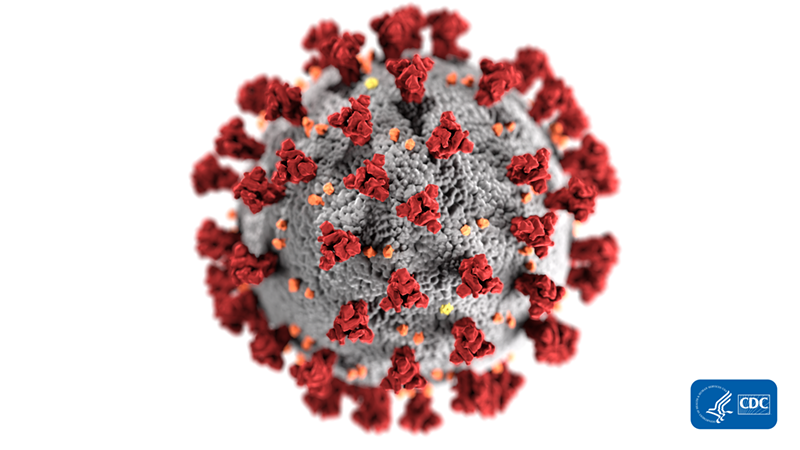As more and more cases of COVID-19 (colloquially known as the coronavirus) spread around the world and slowly increase in the United States, officials with the Hamilton County Health Department say they're preparing in case the virus reaches Southwestern Ohio.
Coronaviruses are a broad category of virus that cause the common cold, among other illnesses. COVID-19 is what scientists call the new "novel" form of the virus — one that hasn't been encountered before and one which epidemiologists do not yet know how to combat.
International health officials say the global mortality rate for COVID-19 is currently hovering around 3.4 percent. But that rate includes the very high proportion of early deaths reported in Wuhan, China — where the virus first made an appearance and where the high number of cases overwhelmed health facilities. Across the rest of China, the death rate is much lower — about .7 percent.
Cases of the novel virus have cropped up in Washington and 14 other states. Those cases have caused nine deaths in the U.S. There are about 90,000 cases of the virus globally, epidemiologists estimate.
So far, none have come to the Buckeye State.
“Public health in Ohio right now is absolutely in mitigation phase,” Interim Hamilton County Health Commissioner Greg Kesterman told county commissioners today.
That means stressing preventative measures like hand washing and establishing a clear line of communication to catch the virus early if it arrives here. Officials have created a single phone line expressly for health providers in the eight-county region to call when they suspect they may have encountered a case of COVID-19. The Ohio Health Department is preparing its own centralized line for the public that will launch Friday (March 6).
The health department is also disseminating information about preventing the virus' spread to schools, elected officials and the general public.
County health officials say the process by which cases can be identified, tested and isolated is also clearly drawn. Part of that preparedness is due to the fact that Hamilton County, along with seven other counties in Ohio, Kentucky and Indiana, participated in a pandemic flu training exercise last October.
“Our plans for pandemic are up to date, but we continue to update them as we get information from the (Centers for Disease Control) and the Ohio Department of Health,” Kesterman said.
So far, roughly 200 people in Ohio have been identified who have traveled to high-risk countries — China, Iran, Italy and South Korea — as the virus has spread. Seven presented concerning symptoms but tested negative for the virus as of Monday.
Someone who fits the criteria — meaning they've come in contact with someone who has a confirmed case of the virus or they've been to one of the above-listed countries and are exhibiting definite symptoms of the illness — will be asked to self-isolate. They are then tested with a nasal swab that is analyzed by the state health department and have their blood taken so that researchers can isolate possible antibodies responding to the virus. If they test positive, they will be quarantined, meaning their health will be monitored as they remain separate from the general public.
"We’re constantly in communication with the prosecutor’s office," Kesterman said. "They’re an important resource for us if we start seeing a lot of quarantines to make sure those quarantines stay in place.”
Should the virus come to the region, and when researchers hit upon a vaccine or good treatments to respond to it, Kesterman says the county health department is ready to go out into communities to administer those. That's what local health departments did when H1N1 hit a decade ago. More than 25,000 people in Cincinnati received vaccines during the 2009 outbreak.
It's unclear when the spread of COVID-19 might slow.
“As things get warmer and people start to do outdoor activity and spread out, we see flu incidence could go down," Kesterman said. "That’s one possible theory for this, but we’re not sure.”
While COVID-19 makes the headlines, Hamilton County Health Department Medical Director Dr. Steve Feagins says Ohioans should also stay cognizant of more common illnesses.
“We are probably in one of the largest flu seasons we’ve seen in many years, just to remind us of what’s right in front of us," he said. "We’re vigilant for everything."
Kesterman says that for now, simple steps are the easiest way to avoid the flu or potential threats like COVID-19.
"Wash your hands after you shake a bunch of hands," he said. "If you touch a bunch of railings, wash your hands before you move on.”
Feagins agrees that keeping your hands clean is more important than trying to avoid airborne contagion.
“A bottle of hand sanitizer is way more important than a mask,” he said.
Hamilton County Commission President Denise Driehaus issued a statement about preparations for COVID-19 today.
"A lot of hard work has gone into preparing this County for a quick and effective response in the case of a local infection," the statement reads. I want to assure people that we will continue to keep the public in the loop with regular updates as needed on COVID-19. Hamilton County Public Health and our Emergency Management Agency are working hand in hand with the Ohio Department of Health (ODH) and the Centers for Disease Control and Prevention (CDC) to protect the health of families in Hamilton County."
Driehaus encouraged residents to find out more at the Hamilton County Public Health website. The health department can also be reached at 513-946-7800.


